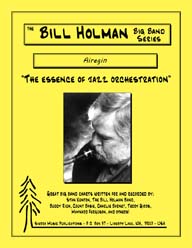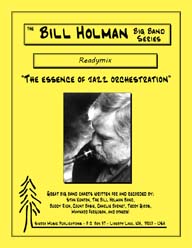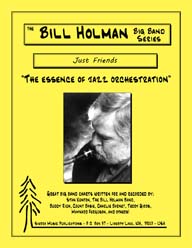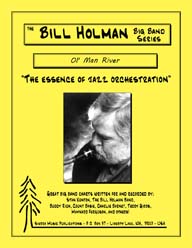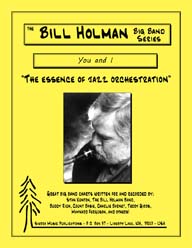AFTER YOU'VE GONE [DOWNLOAD]
Recorded by the Terry Gibbs Dream Band
Arranged by Bill Holman, Prepared for Publication by Dylan Canterbury, Rob DuBoff, and Jeffrey Sultanof
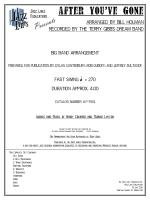
Cat #: JLP-7921-DL
$85.00This product is available for immediate download after purchase.
Questions?
Please call +1-518-587-1102 or email us.
Edition: Jazz Big Band Arrangement
Description: Swing - Difficult
Publisher: Jazz Lines Publications
Bill Holman's arrangement of the classic jazz burner After You've Gone was recorded by both his own big band on his 1958 album In a Jazz Orbit and the Terry Gibbs Dream Band for their 1959 live album Dream Band. It maintains the tune's traditionally exciting brisk pace while employing a number of now-classic tropes of the West Coast big band scene of the time, and is a thrilling ride from start to finish.
A swiftly repeating riff serves as a quick and simple introduction before the tune arrives at measure 5. The melody is handled in two-part counterpoint, with the alto saxes and 2 of the trumpets handling the lead over the tenor and baritone saxes. The second half of the form sees the melody dissipate, now with the other two trumpets and trombones joining in on the action with a third counter line.
The intensity builds toward the end of the melody until a brief ensemble send-off at measure 45 announces a half-chorus of trumpet solo. The second half of the form features a trombone solo, with a few short ensemble bursts serving as a quick break in the action. Gibbs' vibraphone becomes the next featured soloist at measure 85; he gets two full choruses to himself with some repeated background figures from the brass soloists. Holman fakes out the listener with what appears to be the start of the shout chorus after Gibbs wraps up at measure 126, only for a full-chorus tenor sax solo to commence a few measures later, broken up by another false alarm at measure 142.
After a couple of false starts, the shout chorus truly begins at measure 166, with the band roaring at full blast. Despite the fast pace, be sure to emphasize to your band that this entire section should feel calm, confident, controlled, and unforced at all times. The final few measures of the shout taper the volume back off for one last contrapuntal melody line, eventually ending in a bluesy and mildly subdued final ensemble chord.
2 Alto Saxophones
2 Tenor Saxophones
Baritone Saxophone
4 Trumpets
3 Trombones
Vibraphone
Piano
Bass
Drums
Trombone 1: C5



